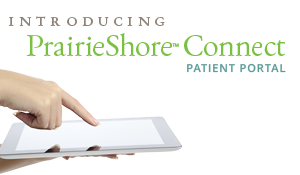Celiac Plexus Block
What is a celiac plexus block?
This is an injection of pain medication that helps to relieve abdominal pain, commonly due to cancer. The celiac plexus is a bundle of nerves that surrounds the aorta, the main artery into your abdomen. Blocking these nerves from carrying pain information can decrease the feeling of pain in your abdomen. A diagnostic injection is usually performed, and if successful, may be followed by a neurolytic injection on a different day.
How is a celiac plexus block done?
First, you’ll be given an intravenous medication to relax you. Then, you’ll lie on your stomach on an x-ray table.
The procedure will be done under sterile conditions. The anesthesiologist will numb a small area of your skin on two areas in the middle of your back. Then, guided by an x-ray, he or she will:
- Insert a thin needle into your back, next to your spine, and inject anesthetic
- Insert a second needle on the other side of your spine
- Inject dye to confirm that medication will go to the correct spot
- Inject pain medication, such as local anesthetic or steroid; alcohol or phenol also may be injected to destroy the nerves
Usually, the procedure takes less than 30 minutes, and you can go home the same day.
During the injections of the medicine you might feel a slight burning sensation. After the injection you will be escorted to the recovery room where you will remain for two to four hours. You will have immediate relief of pain. Your abdomen may feel warm or “different,” and you may begin to feel less abdominal pain. Your abdominal wall or leg may feel numb or weak, but this feeling will subside when the anesthetic wears off. After the neurolytic celiac plexus block, you might experience more discomfort up to seven days. This is from the alcohol which sometimes irritate structures in your abdomen. You might have low blood pressure after the procedure. You will get intravenous fluids and be monitored in the recovery room until your blood pressure is back to normal. This will usually take between two and four hours. You might experience some diarrhea or softer stool. This will return to normal within a couple of days or a week.
You can continue your regular diet and medications immediately, but do not drive or do any rigorous activity for 24 hours after the procedure. Take it easy. You can return to your normal activities the next day.
How effective is a celiac plexus block?
The diagnostic block will give you good pain relief for six to 24 hours. The neurolytic celiac plexus block will usually give you pain relief for at least two months. How long the pain relief lasts is different for each person. For some, celiac plexus blocks can relieve pain for weeks. For others, the relief can last years. Many can return to their normal activities.
Usually people need a series of injections to continue the pain relief. Sometimes it takes only two injections; sometimes it takes more than 10. The nerve block may last several days, but it may last longer with each repeat injection. For those who did not get any relief from the diagnostic celiac plexus block, we would not proceed with the neurolytic celiac plexus block. We would discuss other possibilities of pain control with you.
You might need to continue taking some of your pain medications after the neurolytic celiac plexus block. If you were taking a lot of pain medications, or pain medication for a long period of time prior to the neurolytic celiac plexus block, it should not be stopped suddenly. We will discuss all this with you in detail before the procedure is done.
What are the risks?
The risk of complication from a celiac plexus block is very low. However, there could be bruising or soreness at the injection sites. Serious complications, including infection, collapsed lung, nerve damage and bleeding, are uncommon.
Who should not have a celiac plexus block?
Patients who have an allergy to any anesthetic, are on blood thinning medications, are diabetic, have an active infection, or are pregnant should consult with the pain physician before receiving the procedure. There may be special instructions or lab testing or the procedure might need to be rescheduled.
Is a celiac plexus block right for you?
A celiac plexus block may be right for you if you have chronic abdominal pain — especially linked to abdominal cancers — which does not respond to other pain medication. There’s a better chance of a block relieving your pain if you have the procedure earlier in your illness. Contact us for more information.
At PrairieShore™ Pain Center, our goal is to relieve your pain and improve your quality of life. If your primary physician has advised you to see a specialist for your pain, turn to us for help. To schedule your appointment, please contact us here or give us a call at (847) 883-0077.







